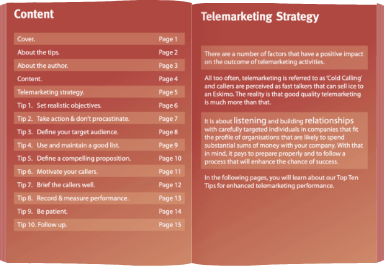It’s tough out there. Businesses have to compete like never before. The pie is smaller and there are fewer pieces to go around. That means businesses have to find new ways to compete and market themselves. So, it pays to get it right first time. To help you maximise your chance of success, check out our 10 Fatal Marketing Mistakes Businesses Must Avoid
So, what are the fatal errors to avoid?
1. Absence of a Strategy
Without a plan, it’s hard to know where you’re going. And if you don’t know where you’re going, how will you know when you’ve arrived? Every business needs a sales and marketing plan to shape and guide its strategy. Without it, the business is rudderless and marketing decisions are ad hoc and unfocused leading to poor choices, ineffective outcomes and wasted budgets.
2. Internal as Opposed to External Focus
Ever heard the expression ‘fiddling while Rome burns?’ That’s where companies focus on things that aren’t important rather than what adds value and what customers need and want. Streamline what you do. Don’t sweat the small stuff and totally focus on customer needs.
3. Failing to Research and Understand Customer Needs
Too few companies use market and /or customer research to properly inform decisions. Management needs to inform itself on customer needs, behaviour, preferences and buying motives amongst others. New media like Facebook and Twitter allow research at a less expensive cost than in the past. Setting up polls is easy. Or you can simply run an independent customer survey.
4. Failing to Invest in Marketing
Few businesses thrive without investment. Marketing and business development are the lifeblood of successful businesses. So, whilst the recession does make things tough, businesses large and small need to invest to survive and grow. Strong companies buck the trend and increase visibility and market share even in a contracting marketplace.
5. Focusing on what you Offer not what People Buy
People don’t care about what you do. They’re only interested in how it relates to them. Communication with customers should therefore start with that premise rather than the all too frequent focus on products and services via a sales / product pitch.
6. Focusing on Products not Solutions
People want solutions to things that bother them. They buy a drill to put up a cabinet that stops things cluttering up the surfaces in a kitchen or bathroom. In b2b terms, clients may be looking for reduced customer attrition or improved safety or staff loyalty. Understand customer challenges and communicate how you solve them and you will grow your business.
7. Focusing on Benefits not Features
Too often we hear clients talking about features when they think they’re talking about benefits. They list these in brochures and on websites. One of our clients talked about slip resistance as a benefit. However, the real benefit of slip resistance is the removal of liability due to slips and falls in the workplace, reduced loss of productivity when people are off work with a bad back and the reduced pay-outs for the accident claims eroding profitability.
8. Not Engaging with Social Media
Some companies still refuse to engage with social media. They still think it’s a fad rather than a fundamental cultural shift. The reality is that people are communicating and talking about companies and issues via social media. They are watching stuff, sharing stuff, reviewing stuff and commenting on all manner of things. They are recommending things they like to friends and business contacts. Organisations must adapt to this new world as customers consume and disseminate information in this way. If companies don’t recognise this and do something about it, they won’t survive. Social Media platforms are a base for two-way communication with the marketplace and can help to develop sales and advocacy.
9. Not Identifying and Engaging with Opinion Formers
Influencers are no longer just politicians and the media. Twitter, Facebook, LinkedIn, TikTok, and the like have changed all that. Opinion is shared with the masses in an instant. Relative unknowns have huge followings. Bloggers are the new journalists. Nowadays, it’s as important to identify and engage with key bloggers and the Twitterati for your sector as it was to engage with editors to get your product featured in the past. Don’t make the mistake of ignoring the digital influencers in your marketplace. Find them and provide content for them. Ask them to provide content for you. Comment on their posts. Embrace their community and respond to their outbound communication. They can spread your word.
10. Ignoring Video
I’ve given this a separate heading due to my belief that this is critical to success. Too few businesses recognise the power of video. YouTube already ranks second in terms of search engine usage. It is growing at a phenomenal pace. Vine has just entered the arena. The ease with which we can create our own content with a simple webcam means that it is within the grasp of every business. You are now your own broadcasters. You own your own channel and you have the capability to inform and engage directly with your target audience. So, don’t ignore video. That’s increasingly how your customers want to find out about your business.
GSA Helps companies plan and implement their lead generation activity. We provide marketing strategy and consultancy and implementation.
If you’d like to find out how GSA Business Development can help Generate Growth for your Business, contact us now.






